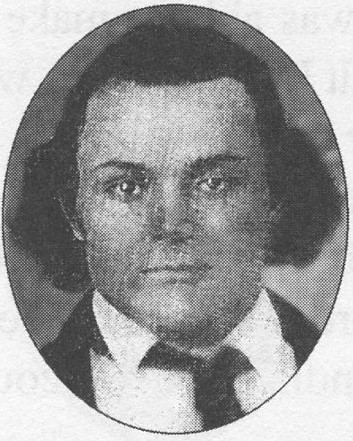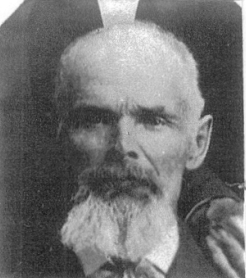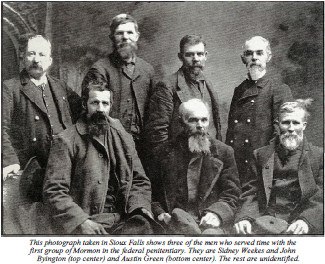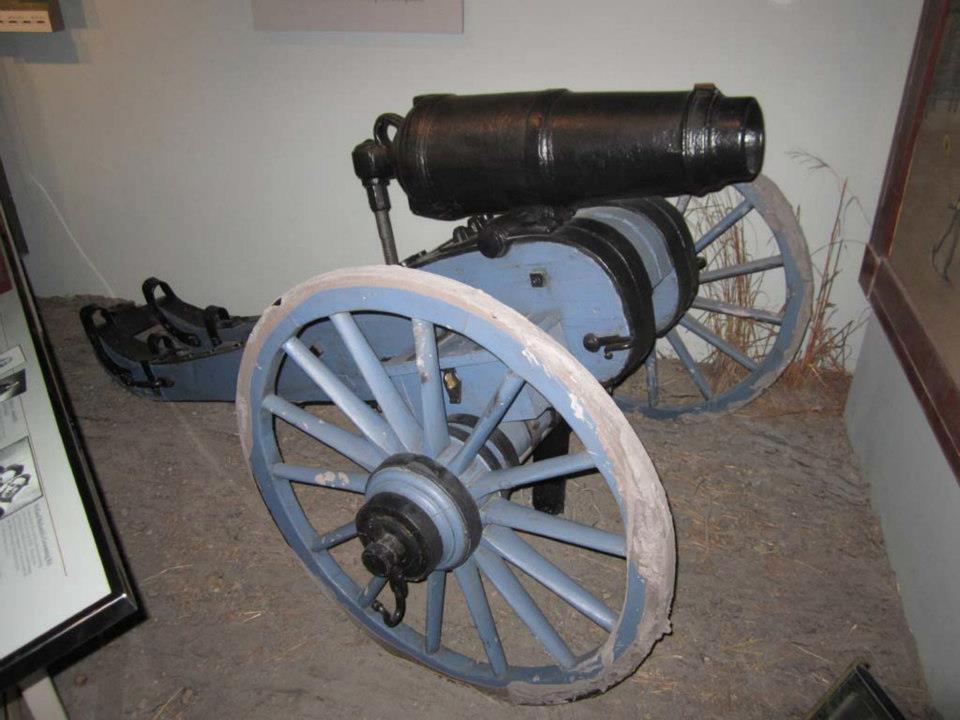Written by Jane F. Green
Austin Greeley Green was born March 26, 1832 (headstone & my records says b: 1834) at Olean, Cataragus, New York. He was the son of Robert Green and Fanny Greeley Green, the second son in a family of three children, two boys and one girl.
When he grew to manhood he was a large man weighing around 200 pounds. He was very active and a great athlete, joining in the sports of that day such as wrestling, jumping, stick pulling etc. He was also a great mountaineer and trapper.
His parents moved from New York to Michigan. It was while there that the Gospel message was brought to them it made an impression on the family and after investigating its principles they joined the church. The spirit of gathering took possession of them and they sold their belongings and moved to Nauvoo.
When they arrived in Nauvoo and found the unsettled condition of the Saints, the persecutions, mobbing's, etc. They decided to continue their journey west with the Saints. They were placed in the second company to cross the plains, known as the Ira Eldridge Company. Austin was a boy of 15 at that time but he was chosen to drive the cannon known as the "Old Sow" across the plains. The old cannon is still among the pioneer relics in the southeast corner of the temple square.
Their trip was marked with trials and hardships incident to pioneer travel. They reached their destination on September 19, 1847. They built them a home in the city but afterward took up a homestead at South Cottonwood.
One day Austin saw two bulls fighting out on a potato patch. He walked out to where they were and picked up a few potatoes they had dug up which served for seed potatoes for them the next year.
The bench land, where Ft. Douglas is now situated was planted to corn. When the crickets put in their appearance the people made an irrigating ditch all around the field, which was filled with water to keep the crickets away from the corn. If one succeeded in crossing it was Austin's business to kill it with a stick made from a wagon bow.
As the later immigrant trains were on their way to the valley, it was necessary to send help to them and Austin was chosen as a scout to go back and meet them. His special duty was to provide meat for the camp, which he did by killing antelope and deer.
Written by Jane F. Green
Austin Greeley Green was born March 26, 1832 (headstone & my records says b: 1834) at Olean, Cataragus, New York. He was the son of Robert Green and Fanny Greeley Green, the second son in a family of three children, two boys and one girl.
When he grew to manhood he was a large man weighing around 200 pounds. He was very active and a great athlete, joining in the sports of that day such as wrestling, jumping, stick pulling etc. He was also a great mountaineer and trapper.
His parents moved from New York to Michigan. It was while there that the Gospel message was brought to them it made an impression on the family and after investigating its principles they joined the church. The spirit of gathering took possession of them and they sold their belongings and moved to Nauvoo.
When they arrived in Nauvoo and found the unsettled condition of the Saints, the persecutions, mobbing's, etc. They decided to continue their journey west with the Saints. They were placed in the second company to cross the plains, known as the Ira Eldridge Company. Austin was a boy of 15 at that time but he was chosen to drive the cannon known as the "Old Sow" across the plains. The old cannon is still among the pioneer relics in the southeast corner of the temple square.
Their trip was marked with trials and hardships incident to pioneer travel. They reached their destination on September 19, 1847. They built them a home in the city but afterward took up a homestead at South Cottonwood.
One day Austin saw two bulls fighting out on a potato patch. He walked out to where they were and picked up a few potatoes they had dug up which served for seed potatoes for them the next year.
The bench land, where Ft. Douglas is now situated was planted to corn. When the crickets put in their appearance the people made an irrigating ditch all around the field, which was filled with water to keep the crickets away from the corn. If one succeeded in crossing it was Austin's business to kill it with a stick made from a wagon bow.
As the later immigrant trains were on their way to the valley, it was necessary to send help to them and Austin was chosen as a scout to go back and meet them. His special duty was to provide meat for the camp, which he did by killing antelope and deer.
Family Members
-
![]()
Mary Lydia Green Scott
1859–1915
-
![]()
Austin Abraham Green
1861–1906
-
![]()
Oscar William Greeley Green
1862–1933
-
![]()
Robert Alvin Green
1864–1926
-
Alvin Albert George Riley Green
1865–1869
-
Gladys Ostina Greeley Green
1867–1869
-
![]()
Alma Lyons Green
1870–1933
-
![]()
Robert Dyer Green
1871–1966
-
Amasa Franklin Green
1872–1873
-
![]()
George Bernard Green
1873–1964
-
![]()
Gilbert Marchant Green
1874–1939
-
![]()
Theo Theodora Fannie Marie Green
1876–1885
-
![]()
Emma Green
1877–1885
-
![]()
Justin Monroe Green
1878–1946
-
![]()
Ernest LeRoy Green
1879–1920
-
![]()
Charles Edgar "Ted" Green
1881–1964
-
![]()
Herman Conrad Green
1884–1944
-
![]()
Lott Angus Green
1887–1955
-
![]()
Harriet Merle Green Jenkins
1890–1975
-
![]()
Dr Curtis Greeley Green
1892–1960
-
![]()
Grace Hawker Green Rigby
1895–1985
Sponsored by Ancestry
Advertisement
Records on Ancestry
Sponsored by Ancestry
Advertisement
































